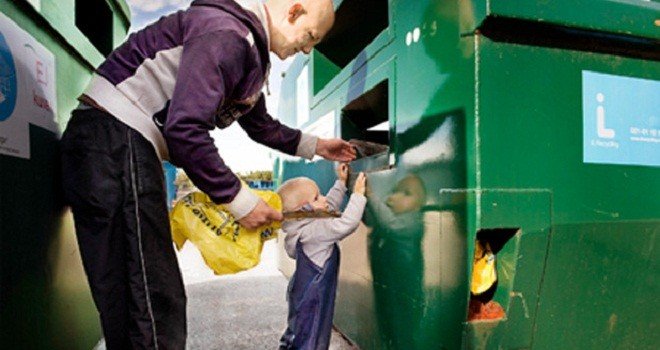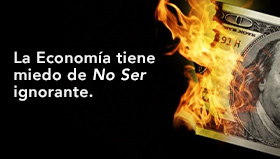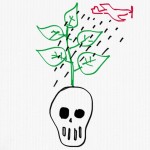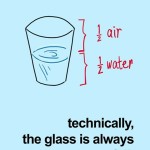Ideas on pessimism, 3 alternatives for action & 1 application example:
Thinking of the concepts of the last newsletter on the implications of keeping acting this way, I was interested in closing a couple of ideas and leave the “Climate Wars” book aside for a while, given that it has all of its pages written down with pencil, highlighted and with little marks all over it.
Welzer is pretty much a pessimistic guy (or simply sees reality in a very objective way). He even opens the last chapter of his book with a Heiner Müller quote which says: Optimism is no more than a lack of information. I would say that pessimism is no more than a lack of interpretation and further application of all that coming information. Information mutated in facts, experiences, and knowledge which waits to be interpreted proactively.
Pessimism seems to be a common characteristic among those thinkers who spend too much time immersed in the complexity of the social web. They manage too much information; they handle too many social relationships, which delays short term applicable solutions –solutions only applicable in cause and effect conflicts, where A affects B and nothing else-, hence blurring the vision of a planetary solution.
“If, in the occidental world, someone felt responsible for the misery of a person situated at the end of a chain of actions which beginning is located in him, he would be taken as an irrational and insensate person.” Page 291.
Social processes do not have a linear logic, but an infinite chain of events which simulate an intangible parallel ecosystem, invisible for us to see, hence, escaping our daily lives. It is too much for us to process it INSTANTLY in our heads, and it ends up in a second level… or even a third one…
And those who study social processes grab their heads in despair, with all the pieces of the puzzle scattered over the table… and just a few of them united forming a tiny piece of image… And in the moment they believe they understand something of that tiny image of the social process, a counter example appears, or new social actors come into scene, saying: “hey, you are doing great! But the puzzle is not of 100 pieces, but 1000” (and then it will be 10000, and on and on).
Hence, for those who feel indignation when confronted with reality, for those who want to assume their social and environmental responsibility, Welzer provides 3 alternatives for action:
1) The individualization of the problem and of its solution. In other words, doing everything you can do environmentally speaking, from home, from my micro-world, to save the planet. From separating our waste for its subsequent treatment and changing all our light bulbs to low consumption ones, to buying locally, circulating on bike and avoiding the use of cars as much as possible.
But thinking that a social transformation will begin with the little things one does indoors is something ideological “when it does not include the corporative and political actors in the responsibility.” Page 291.
It is of no use to separate your waste in your home and throw them to the street, if a local differentiated waste recollection system does not exist. This is why the first alternative must be accompanied by the second one:
2) State action. Where the government has the capacity –and responsibility– of diagramming a new energy matrix, new consumption and waste patterns, a reorganization of taxes, the implementation of production systems which act making a tight symbiosis relationship with Earth, our life provider, and a new educational system, that includes environmental awareness, the sustainable use of our resources, an ecological economy and permaculture as main axis of teaching. We are the ones who must claim for these changes to the system.
However, Welzer explains that “national solutions cannot conduct a “climate shift” because its quantitative influence is too scarce.” Page 293. In other words, within the geographical boundaries the country. Then, the 3 alternatives for action must be taken forward simultaneously:
3) The interstate sphere. All the global actions, which imply a cooperative action among different countries. This is the greatest challenge we must face.
As an example of the 3 alternatives in action, in this article, we come to know that Sweden imports waste from Norway, as in Sweden there is no more waste to recycle.
Impeccable… For the Swedish, waste is a resource which they transform in energy.
They’ve been separating waste for the last 30 years and generating new job positions by redesigning their social metabolism. This is, inserting factories and new industries in charge of processing waste, within the already existing system. Something like sustainable patches inside the same system…
But it was all possible because the citizens themselves made the habit of separating their waste for the last 30 years; and for 30 years they’ve been claiming for the political changes required for these transformations, and they are finally achieving it.
Of course, Sweden has the economic resources to put through with the structural changes needed in a quick way. Our country lacks these resources, too many corrupt politicians took it all already… but I am sure we have the human resources to start doing things by ourselves.
Better days will come, as long as we assume our role as living and conscious beings, worthy representatives of our sphere of life in the universe. I often write on the responsibility those who can study, investigate, talk and create a buzz, have towards the Planet… Welzer sums it up like this:
“(..) the fact of being free of the immediate necessity of ensuring survival, allows one to afford to deal with the possibilities of improving the existence and, conversely, this luxury may be restricted or disappear at any time without trace when survival is threatened.
(…)
What is needed, therefore, is society to design itself.” Page 299.
Have a great week!
Brian Longstaff.-






















Lucila Toral Nov 13 , 2012 at 01:02 AM /
Genial!!! Cristobal Cali